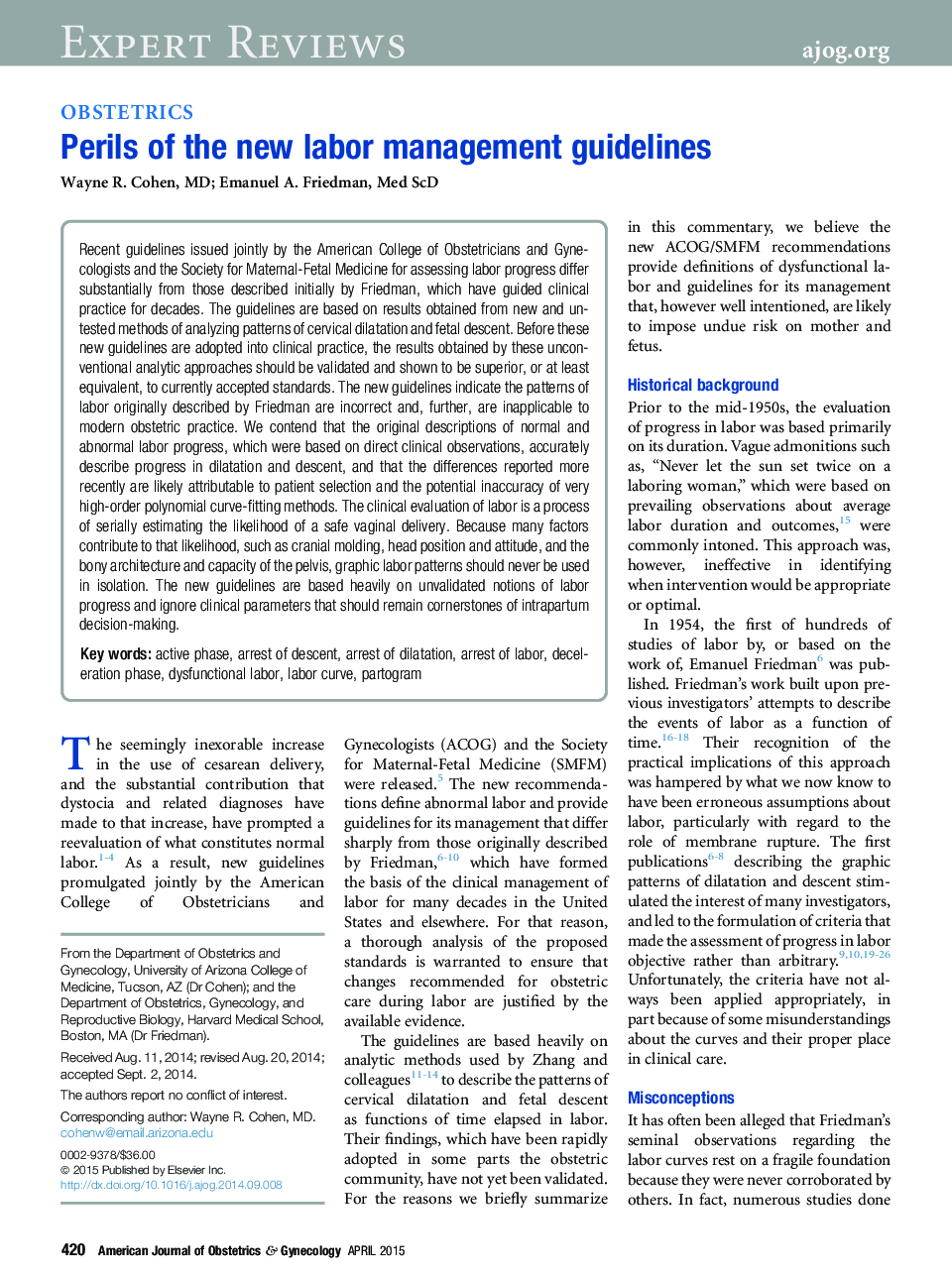| Article ID | Journal | Published Year | Pages | File Type |
|---|---|---|---|---|
| 6145280 | American Journal of Obstetrics and Gynecology | 2015 | 8 Pages |
Recent guidelines issued jointly by the American College of Obstetricians and Gynecologists and the Society for Maternal-Fetal Medicine for assessing labor progress differ substantially from those described initially by Friedman, which have guided clinical practice for decades. The guidelines are based on results obtained from new and untested methods of analyzing patterns of cervical dilatation and fetal descent. Before these new guidelines are adopted into clinical practice, the results obtained by these unconventional analytic approaches should be validated and shown to be superior, or at least equivalent, to currently accepted standards. The new guidelines indicate the patterns of labor originally described by Friedman are incorrect and, further, are inapplicable to modern obstetric practice. We contend that the original descriptions of normal and abnormal labor progress, which were based on direct clinical observations, accurately describe progress in dilatation and descent, and that the differences reported more recently are likely attributable to patient selection and the potential inaccuracy of very high-order polynomial curve-fitting methods. The clinical evaluation of labor is a process of serially estimating the likelihood of a safe vaginal delivery. Because many factors contribute to that likelihood, such as cranial molding, head position and attitude, and the bony architecture and capacity of the pelvis, graphic labor patterns should never be used in isolation. The new guidelines are based heavily on unvalidated notions of labor progress and ignore clinical parameters that should remain cornerstones of intrapartum decision-making.
